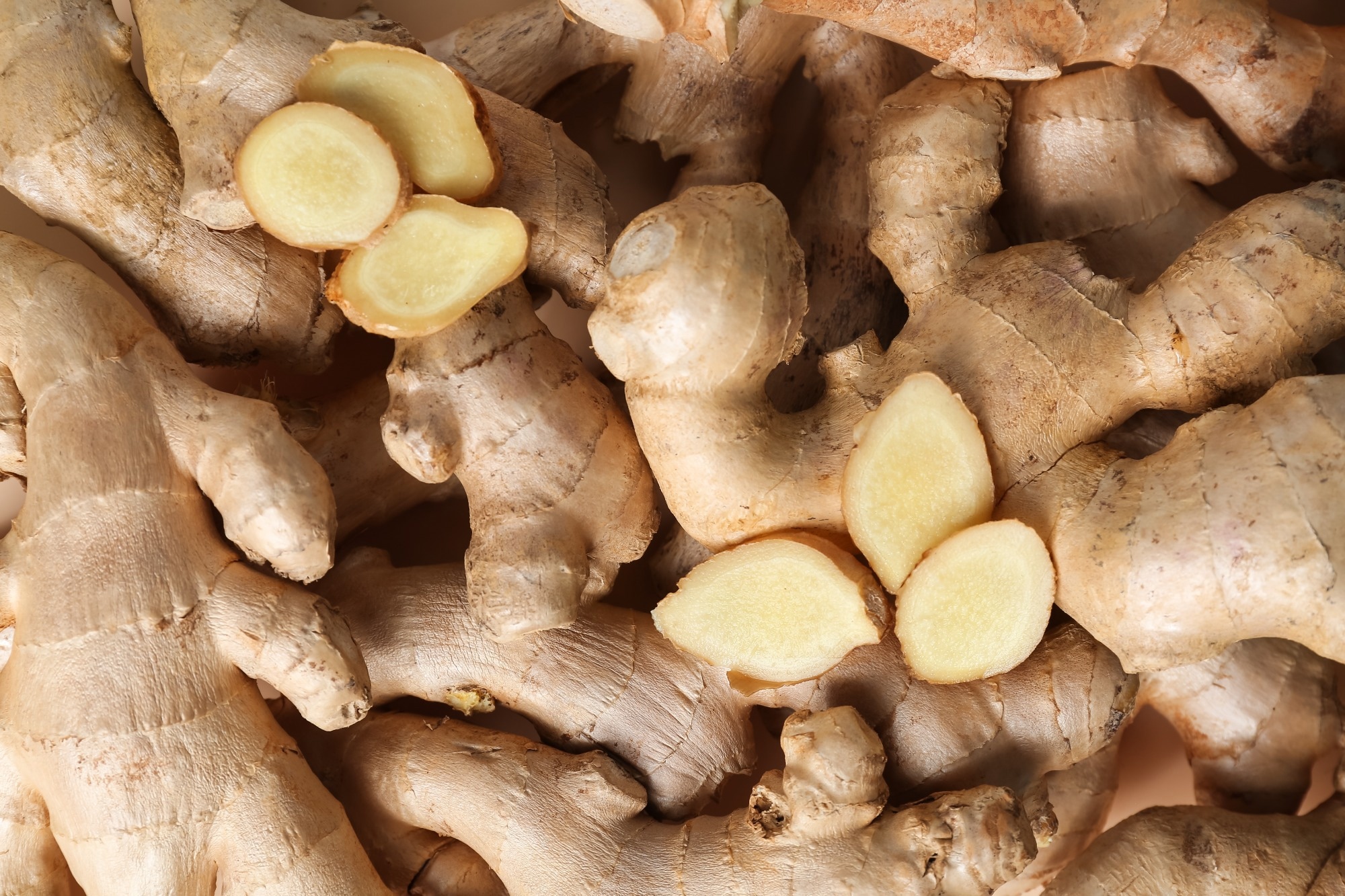Researchers have developed a sustainable mortar blend that resists microbial growth by incorporating ginger and ornamental rock waste. This blend offers a promising alternative to conventional coatings in humid environments.
 Study: Antimicrobial Action of Ginger and Ornamental Rock Wastes for Cement Mortar. Image Credit: Pixel-Shot/Shutterstock.com
Study: Antimicrobial Action of Ginger and Ornamental Rock Wastes for Cement Mortar. Image Credit: Pixel-Shot/Shutterstock.com
Published in Sustainability, the study explored how these natural additives can enhance the mechanical strength and microbiological resistance of cement-based mortars. By combining limestone, ornamental rock residue, and powdered ginger, the research team aimed to create a more durable, environmentally friendly solution for civil construction.
Background
In moisture-prone environments, cementitious materials are especially vulnerable to microbial activity, including bacteria, algae, and fungi. This microbial colonization, commonly referred to as biodeterioration, can severely affect the material’s mineral structure and surface integrity. Fungi, in particular, are the most aggressive agents of this process, infiltrating capillaries, pores, and microcracks, leading to visible damage, functional loss, and long-term degradation of building elements.
To address this, the study investigated the incorporation of ornamental stone waste and ginger into rendering mortars as a strategy to suppress microbial growth. Ginger, known for its antimicrobial bioactive compounds, was evaluated for its potential to prevent fungal and bacterial colonization when integrated into construction materials.
Methods
Mortar samples were prepared using locally sourced cement, lime, sand, ornamental rock waste, and powdered ginger. The morphological features of the stone waste and ginger were examined using scanning electron microscopy, while X-ray diffraction (XRD) was used to identify their crystalline structures. Microorganism isolation was performed using selective and differential culture media.
Six mortar formulations were tested:
- Control: Cement and sand (1:6), with no lime.
- Treatment 1: Cement, lime, and sand (1:1:6).
- Treatment 2: Lime replaced with ornamental rock residue.
- Treatments 3 & 4: Stone residue replaced with 5 g and 10 g of powdered ginger, respectively.
- Treatment 5: Combined cement, lime, rock residue, ginger, and sand (1:1:0.3:0.075:6).
Fresh-state density was measured, followed by mechanical testing (flexural and compressive strength) on six samples per composition. To simulate real-world conditions, the mortar was exposed in two environments: a dry zone representing parapet surfaces and a high-humidity area near a cattle pen.
Results and Discussion
Treatments 1 and 2 showed increased density, while Treatments 3 and 4 showed a reduction, attributed to the porous nature of ginger. Treatment 5 exhibited a moderate density, lower than Treatments 2 and 3, which could be beneficial for reducing structural load when used as a coating.
The addition of lime and ornamental rock waste reduced air content, improving compactness. In contrast, ginger increased air entrainment on its own. Interestingly, when ginger was combined with stone waste, it helped balance the air content, suggesting a synergistic interaction between the two.
In terms of mechanical strength, ornamental stone waste significantly improved both flexural and compressive properties. Although ginger alone slightly reduced flexural strength, its combination with stone waste (as in Treatment 5) maintained performance while introducing antimicrobial properties. This formulation proved to be the most effective overall, limiting microbial colonization without compromising structural integrity.
These findings support the idea that natural additives can serve as functional agents in cement-based systems - not only improving durability but also reducing the need for synthetic chemicals used to treat microbial damage.
Conclusion
The study confirms that ornamental rock waste and ginger are effective, eco-friendly additives for reducing microbial colonization in coating mortars. When used together, they substantially decreased colony-forming unit counts while maintaining favorable mechanical performance and workability.
Characterization tests validated their compatibility with cement matrices, and the results demonstrated that their inclusion does not compromise - and can even improve - the technical performance of mortars. Ginger’s antimicrobial compounds played a key role in suppressing pathogenic growth, making it especially effective in humid environments where biodeterioration is common.
Compared to traditional formulations, the enhanced mortar offers superior resistance to both structural stress and microbial degradation, pointing to a viable strategy for lowering maintenance costs and promoting sustainable construction practices.
Journal Reference
Siqueira, R. M. et al. (2025). Antimicrobial Action of Ginger and Ornamental Rock Wastes for Cement Mortar. Sustainability, 17(10), 4698. DOI: 10.3390/su17104698, https://www.mdpi.com/2071-1050/17/10/4698
Disclaimer: The views expressed here are those of the author expressed in their private capacity and do not necessarily represent the views of AZoM.com Limited T/A AZoNetwork the owner and operator of this website. This disclaimer forms part of the Terms and conditions of use of this website.